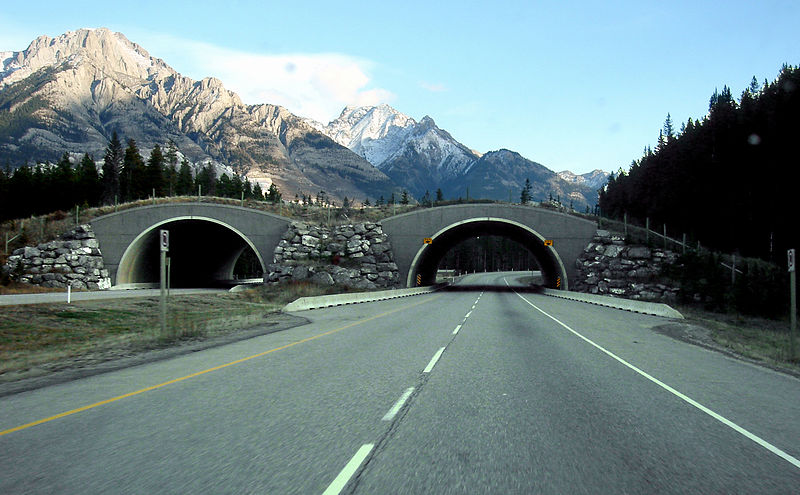Dispersal and migration are important aspects of many different animals life histories. Dispersal is a relatively short, one-way movement. There are many reasons for dispersal, from leaving an overcrowded area to avoid competition to leaving an area to find individuals less genetically similar to mate with. Migrations are longer, two-way movements. Migration can also have several driving factors, from resource availability to seasonal variation. Some species are partially migratory depending on the condition of the individuals at the time of the migration and the food availability at the sites.
Many factors can influence the success of such a trip. For some animals, the landscape they travel across and its connectivity has less impact on the success of the journey. Animals such as birds do not need a continuous corridor of natural landscape to migrate, but other factors such as weather patterns have a larger impact on migration success.
For other animals, the area they travel through is pivotal for the success of their movement. Movement patterns are not only altered by urbanized areas, but also by linear developments. There have been many fatalities of large and small vertebrates at attempted road crossings on highways that intersect the areas they need to move through. Areas they used to move through without disturbance.
Highways have limited some species ability to disperse and migrate. Not only has the mortality rates of migration increased in some cases, but some animals have lost their ability to move across highways either due to fencing or avoiding the disturbance. Fencing, while reducing mortality due to vehicle collisions, also reduces connectivity, gene flow and recolonization of areas. These limitations in dispersal can cause reduced population levels due to lower carrying capacity and genetic bottlenecks if the patches are too small. These are often reasons animals need to disperse. Inability to migrate can cause death when resources run out or the animals are trapped in areas during unsuitable seasons. Because of this, some highways have been built with underpasses and overpasses for wildlife to help their ability to move safely across the landscape.
Banff National Park is well known for the wildlife overpasses crossing the Trans-Canada highway. Several wildlife overpasses were added when the highway was upgraded from two lanes to four through the park, which is well known for its elk, black bear, moose, and other large mammal populations. Ten wildlife overpasses were built in 1988, an addition eleven were added in 1997 and the final phase includes 21 overpasses including four, 60m wide crossings. Parks Canada is also involved in the longest monitoring program of the success of these crossings.
Deer are detected the most at the crossings, and it appears to take several years before grizzlies will cross. Grizzlies have been seen crossing at the overpasses built in the first phase, but not those built recently. Wolverines, black bears, coyotes, elk, deer, and bighorn sheep are all found more commonly on the older crossings than the newer ones. This indicates that it takes the animals several years to become accustomed to the new development or to learn where the crossings are.
Some species also have a preference on using overpasses or underpasses. Grizzlies, deer, moose and elk are found almost exclusively on overpasses, while cougars and coyotes are nondiscriminatory. This is likely related to other behaviours in these animals. Moose, elk and deer are herbivores that are wary of predators and have shown no leanings towards going underground. Cougars and coyotes however, likely don’t have the same fear of entering dark enclosed spaces.
Wildlife crossings also increase when populations increase. This is likely related to the need to disperse to find more food. Overpasses also help with the need to disperse to find individuals that are not kin, as they allow for genetic mixing between populations.
Wildlife crossings, in many situations and specifically Banff National Park have been a useful method in conservation to protect a variety of animals. These connectors allow animals better access to their historical range by reducing the mortality risk of dispersing and migrating, and allowing individuals to relocate when their current habitat becomes unsuitable. These are important features to ensure that wildlife populations remain able to move across their landscape.


Recent Comments